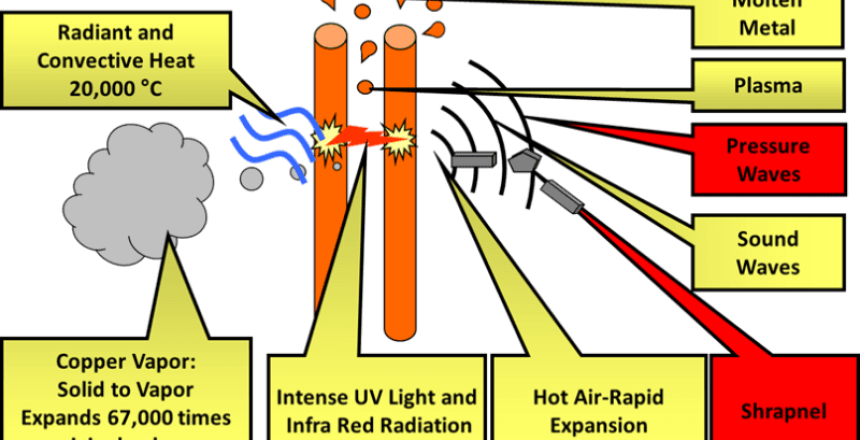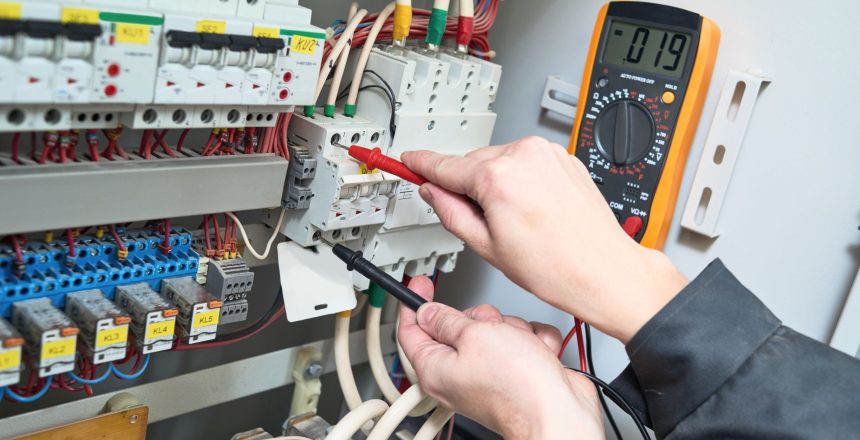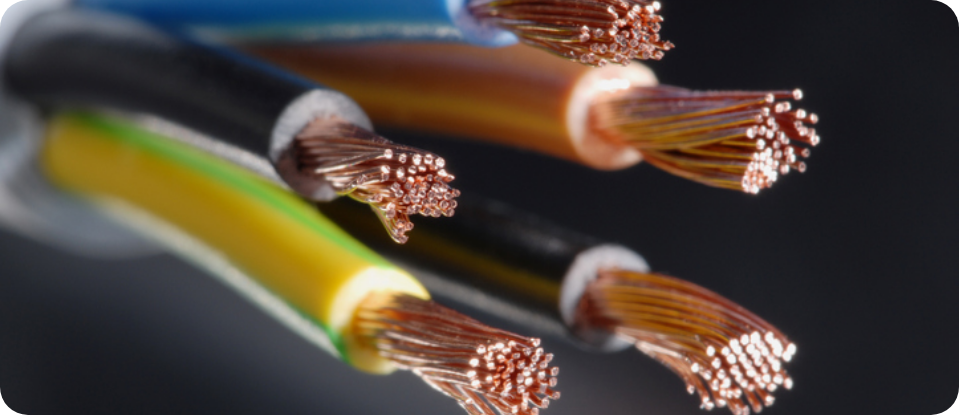Principal Electrical Engineer, Paul Hopton, explores the process of identifying Arc Flash risk, how Incident Energy is calculated, and what is entailed within the Arc Flash Study itself, and so much more.
What is an Arc Flash Study?
An Arc Flash Study is an analysis of an electrical distribution system to determine by calculation the worst-case arc flash hazard that personnel could be exposed to if an arc flash event occurred. Once the Arc Flash hazard has been quantified, control measures can be put in place to mitigate the hazard.
What is an Arc Flash?
The Standard that we use for calculating arc flash hazard, IEEE 1584, defines arc flash as:
“An electric arc event with thermal energy dissipated as radiant, convective, and conductive heat.”
How can an Arc Flash happen?
Arc flash is a type of electrical explosion or discharge that results from a connection through air to earth or another voltage phase in an electrical system.
Consider first arc welding, the diagram below shows a basic arrangement:
The arc at the electrode tip is initiated by “striking” the tip on the item to be welded. The process of initiating an arc during an arc flash event is very similar, there has to be an initiating event for the arc to be produced. The arc then produces plasma, which is conductive, this conductive plasma allows the arc to sustain by providing a path for the arc current to flow through. The arc will continue to sustain until an upstream protection device (fuse or circuit breaker) operates or until the circuit is broken by some other means. This might be for example by the copper conductive parts being melted by the extreme heat, widening the gap that the arc is traversing to the point where the arc extinguishes.
An arc flash event can be initiated in a number of ways, some examples are:
- Operation of switchgear:
- Failure of the switchgear
- Opening under load conditions – if the switch is not rated for this.
- Switchgear is contaminated with a foreign body e.g. dust, vermin, process material.
- Closing on to a fault – if the switch is not rated for this.
- Incorrect operation of the switchgear
- Opening/closing of access panels (hinged and fixed):
- Failure of linkages between operating handles and switchgear
- Foreign objects e.g. failure of ingress protection allowing dust, process material etc. to enter the enclosure.
- Loose connections disturbed when access panel is moved.
- Dropped fasteners.
- Testing and Fault Finding:
- Incorrectly rated test equipment
- Selection of incorrect measuring parameter e.g. selection of current measurement when measuring voltage.
- Faulty test equipment or test leads
- Accidental operation e.g. slips/inadvertent movement when using test probes.
- Incorrect operation e.g. using Low Voltage test equipment on High Voltage sources
- Working in proximity to live conductive parts/live working
- Isolation errors e.g. mislabelling of equipment, unfamiliarity with site/equipment, incorrect documentation.
- Errors related to competency:
- Failure to properly determine competency.
- Lack of experience
- Lack of knowledge
- Bogus or counterfeit qualifications
- And the list goes on…………….
The first step is determining the hazard. We must identify for each piece equipment on our electrical network what the worst-case arc flash hazard is, so that we can put control measures in place to mitigate the risk. We determine the hazard by calculating the “incident energy” level for each piece of equipment. Incident energy is defined as: “The amount of thermal energy impressed on a surface, a certain distance from the source, generated during an electric arc event”. It can be expressed in a number of units but typically it is quoted in calories/centimeter2 (Cal/cm2) for the simple reason that arc flash personal protective equipment is normally rated in Cal/cm2.
How do we calculate Incident Energy?
At Electrical Safety UK we recommend carrying out an arc flash study. We do this by modelling the electrical network in software so that we can calculate the incident energy levels for each piece of equipment on the network. We recommend doing this for all three phase (3Φ):
- High Voltage (HV) circuits
- Low Voltage (LV) circuits rated at:
- ≥100Amp when protected by a fuse
- ≥63Amp when protected by a circuit breaker
Note: We can demonstrate that LV circuits protected outside these parameters are below the low hazard threshold of 1.2 Cal/cm2 and therefore do not need to be included in the scope of the study. Typically this means all the final circuits are excluded from scope and therefore the cost of the study is significantly reduced when compared to an assessment of all three phase LV circuits.
Carry out the Arc Flash Study
The arc flash study is completed by executing the following steps:
- Collect data on the network, typically:
- System one-line diagrams
- Fixed wiring inspection and test reports
- Electric utility source information
- Switchboard/Ring Main Unit/Load Centre/Distribution Board information
- Details of all onsite generators, voltage sources, and large motors
- Details of all transformers, reactors, and capacitors
- All conductor sizes, types and lengths
- All protective device brands, models and settings including CT ratios where applicable.
- Model the network in software.
- Calculate prospective short circuit currents throughout the system and determine characteristics of all circuit protective devices.
- Calculate the Arc Flash Incident Energy Levels and Arc Flash Boundary Distances on each piece of equipment that is connected to your Electrical Distribution Network.
- Carry out a simple protection discrimination check.
- Label the equipment with the calculated incident energy, arc flash boundary distance and recommended Personal Protective Equipment (PPE) that could be used to mitigate the risk.
- Reduce the arc flash incident energy levels (if >8Cal/cm2 and reasonably practicable).
- For equipment that has incident energy levels above 8 Cal/cm2 after the incident energy reduction work has been completed in the previous step, carry out task-based arc flash risk assessments. These risk assessments determine what activities are carried out on the equipment and for each activity whether control measures can be put in place to mitigate the risk, including the use of arc flash PPE.
- Give your staff the competence to understand Arc Flash Risk and how they can mitigate it. Explain the arc flash study to them and what they are required to do to keep themselves safe.
- Ensure visitors and contractors on your site understand their responsibilities in ensuring that your arc flash risk is managed appropriately.
How can ESUK help?
If you would like more information or help in carrying out an Arc Flash Study, why not get in touch with us using the form below. There is no charge for our initial pre-assessment visit. We would be happy to come and see you to discuss your Arc Flash Study requirements and if required provide you with a fixed price proposal for an arc flash study.




